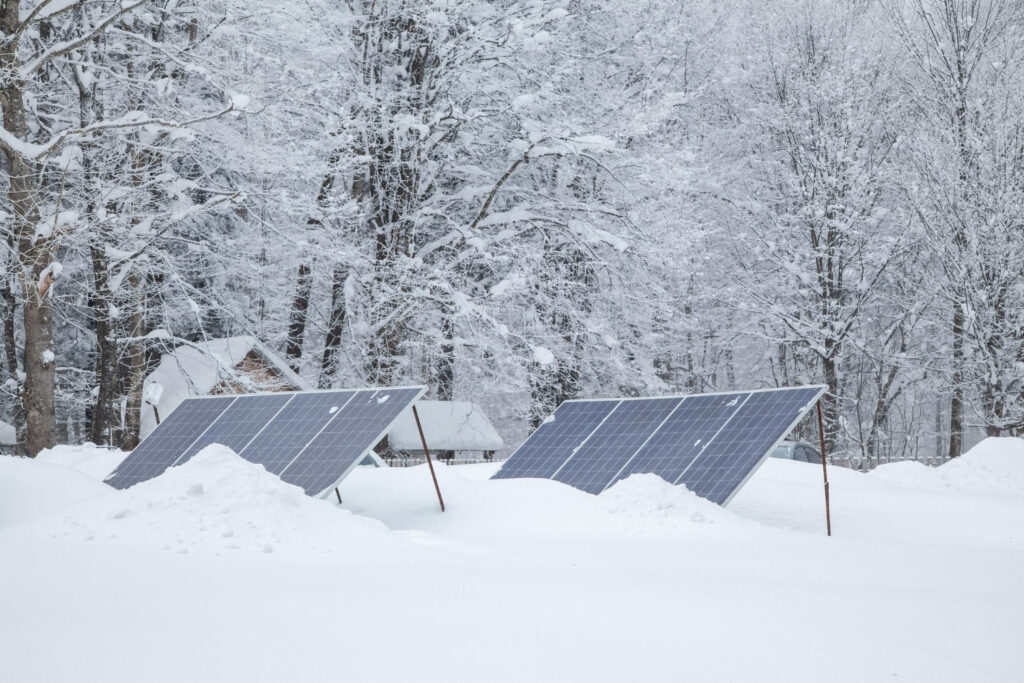Combining solar with storage battery and other ways to make solar power work in the winter
-
By
upssolar
2024 has started off with several periods of strong winds, heavy rain – and snow in some parts of the UK. Coupled with the traditionally overcast skies of January and February and you could be forgiven for thinking that solar power is not an option for powering a home or business in the winter months. This is very much not the case, however. While there may be less sunshine, the solar energy that can be produced is still adequate for most power requirements. In addition, generating electricity using solar with storage battery options means that any excess from unseasonably sunnier days can be stored for use during duller conditions, or at night.
Solar with storage battery
Being able to store solar power makes a photovoltaic solar panel system more efficient all year round. Using solar with storage battery in the winter months means that you can keep the lights on, even during the longer evenings using electricity generated from the winter sun. While it is true that solar energy can be more powerful in the summer when the sun shines for longer, it still generates energy when the weather conditions are less than ideal. Solar panels use sunlight to generate energy rather than temperatures. So, as long as there is still sunlight hitting their surface, solar energy can be generated by the system. Even during sub-zero temperatures or days when clouds are sitting lower in the sky.
How snow can help
When it snows, this can have varying effects on solar panels. If too thick a layer of snow falls on the roof or other surface where the panels are installed, this could, clearly, obscure them from receiving direct sunlight. In this case, it is best to try and clear away the snow if safe to do so to allow sunlight through. Thinner layers of snow – up to around eight centimetres – can still allow light through. However, snow can also have a positive effect in some circumstances. In what is known as the albedo effect, snow that has settled on the ground or elsewhere can reflect sunlight back up to the panels if the angles are right. This increases the amount of sunshine hitting the panels – from above and below.
Winter care for solar with storage battery systems
Another reason why you don’t have to pack away your solar with storage battery systems in the winter is how easily they can be maintained. In fact, winter may be a great time of year to book an annual service. The majority of solar panels are designed to withstand reasonable amounts of heavy rain, hailstones, snow and winds.
It could, however, be wise to cover them if a particularly strong storm or adverse weather conditions are forecast. That said, this is true all year round. If you are especially worried about winter weather damaging your solar panels, there are wire mesh protective covers available that still allow sunlight to get through. If you need to clear away heavy frost or obscuring coverings of snow, use a brush rather than a sharper implement (such as a rake) to avoid scratching the surface.
Top tips for winter performance
As with any system, solar panels will work better when maintained, monitored and handled properly. Keeping systems up to scratch during the winter can be made easier by following a few simple steps. For example, connecting solar with storage battery solutions will enable the system to store more energy for use during dull periods or at night. This is particularly important during the winter months, so ensure that a really good battery is installed and working correctly. Locate batteries somewhere insulated, sheltered and dry for optimum performance.
Keep an eye on the panels themselves too for signs of damage, wear and tear and dirt. The train will dislodge some debris, but regular cleaning and maintenance will keep the system in top working order. It is good practice to arrange regular servicing – your solar with battery storage provider should be able to arrange this. Routine visits for cleaning and inspection will help identify any problems sooner rather than later. It can also help you stay informed about upgrades, add-ons and general advances in solar power technology and design.



